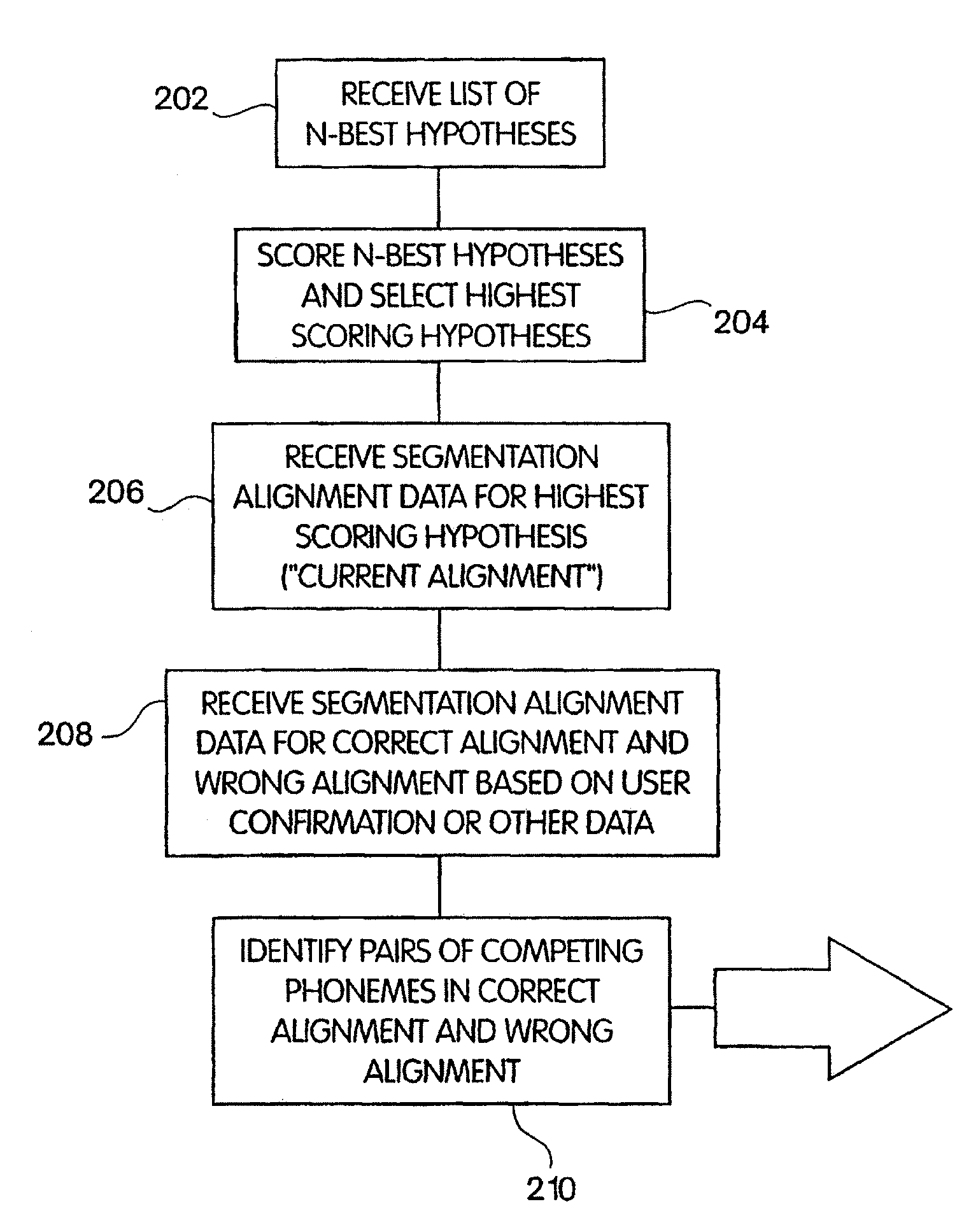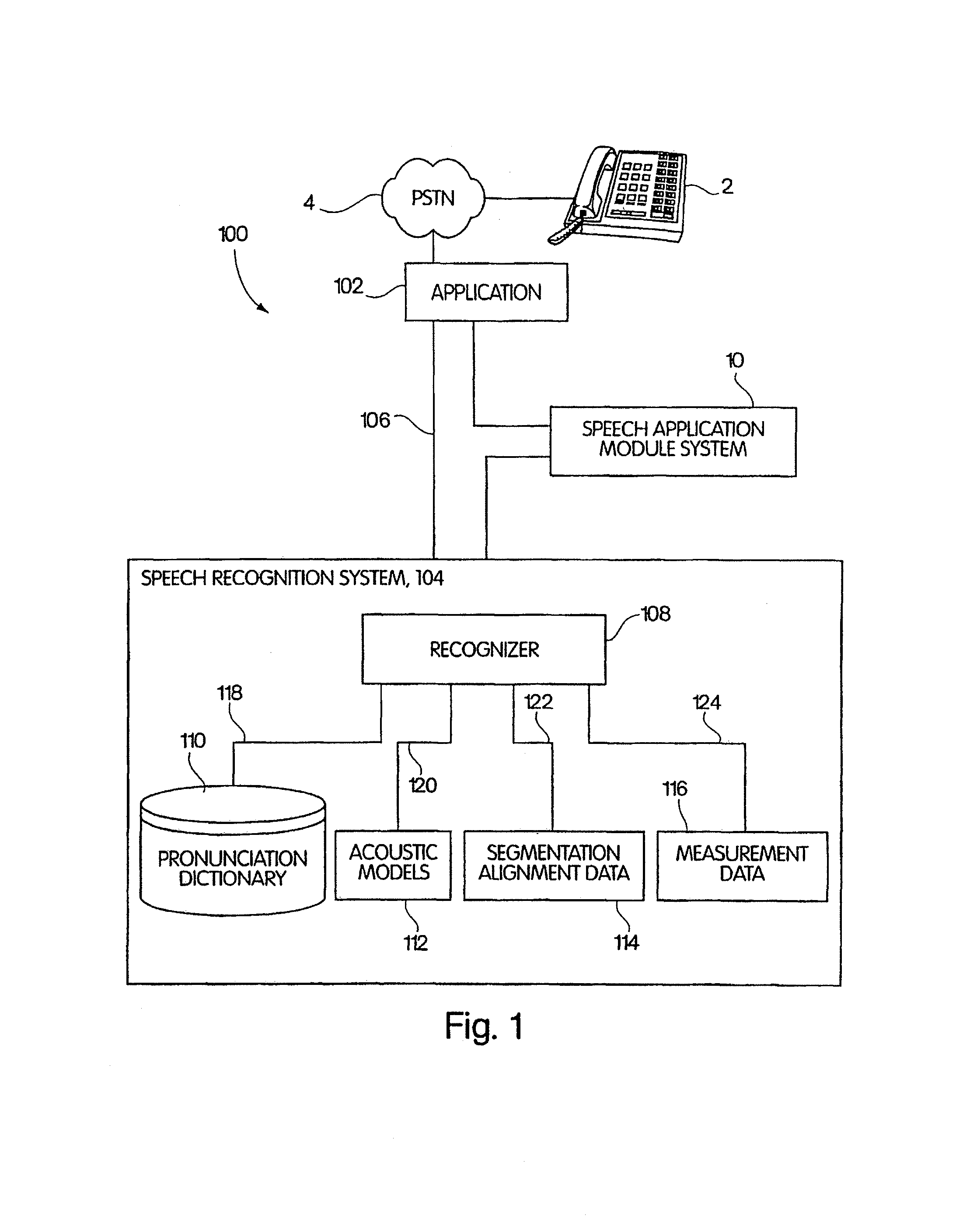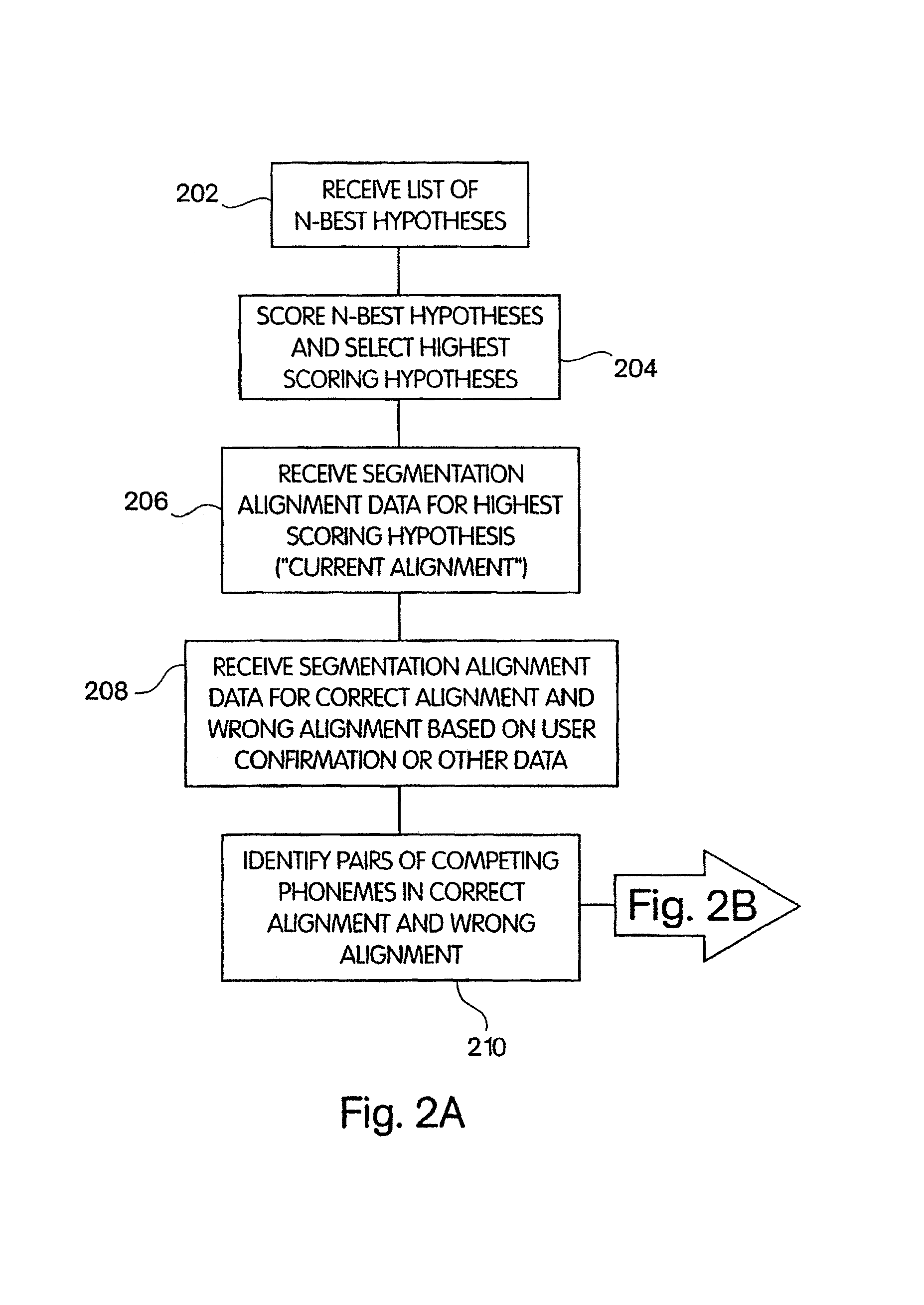Method and apparatus for discriminative training of acoustic models of a speech recognition system
a speech recognition system and discriminative training technology, applied in speech analysis, speech recognition, instruments, etc., can solve problems such as speech recognizers that cannot be used in applications with speech recognizers, speech recognizers that are difficult to distinguish vocabularies, and speech recognizers that lack information that can be used
- Summary
- Abstract
- Description
- Claims
- Application Information
AI Technical Summary
Problems solved by technology
Method used
Image
Examples
Embodiment Construction
[0027]A method and apparatus providing improved discriminative training of an acoustic model in an automatic speech recognition system is described.
[0028]In the following description, for the purposes of explanation, numerous specific details are set forth in order to provide a thorough understanding of the present invention. It will be apparent, however, to one skilled in the art that the present invention may be practiced without these specific details. In other instances, well-known structures and devices are shown in block diagram form in order to avoid unnecessarily obscuring the present invention.
System Overview
[0029]An approach for automatically training or modifying one or more acoustic models of words in a speech recognition system is described. In general, an acoustic model is modified based on information about a particular application or the context in which the speech recognizer is used. The application-specific information comprises speech segment alignment data for at...
PUM
 Login to View More
Login to View More Abstract
Description
Claims
Application Information
 Login to View More
Login to View More - R&D
- Intellectual Property
- Life Sciences
- Materials
- Tech Scout
- Unparalleled Data Quality
- Higher Quality Content
- 60% Fewer Hallucinations
Browse by: Latest US Patents, China's latest patents, Technical Efficacy Thesaurus, Application Domain, Technology Topic, Popular Technical Reports.
© 2025 PatSnap. All rights reserved.Legal|Privacy policy|Modern Slavery Act Transparency Statement|Sitemap|About US| Contact US: help@patsnap.com



